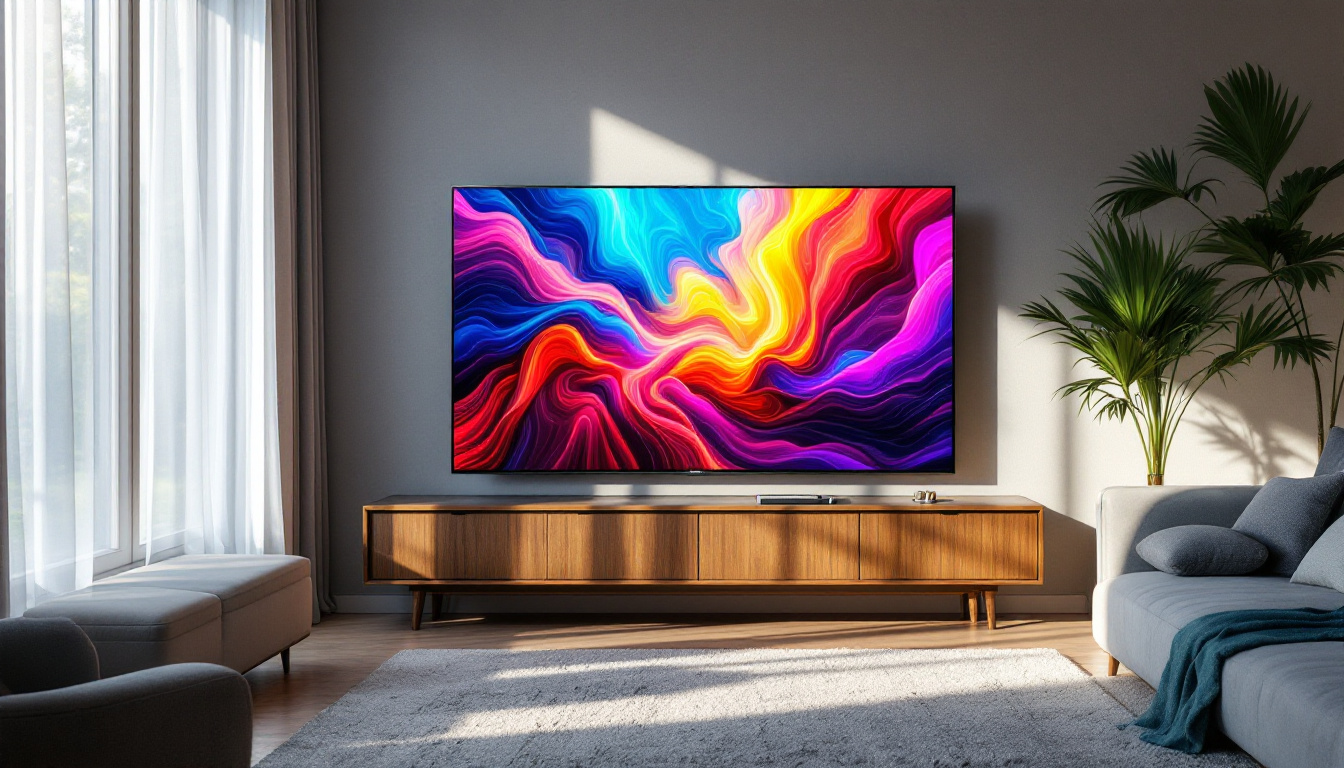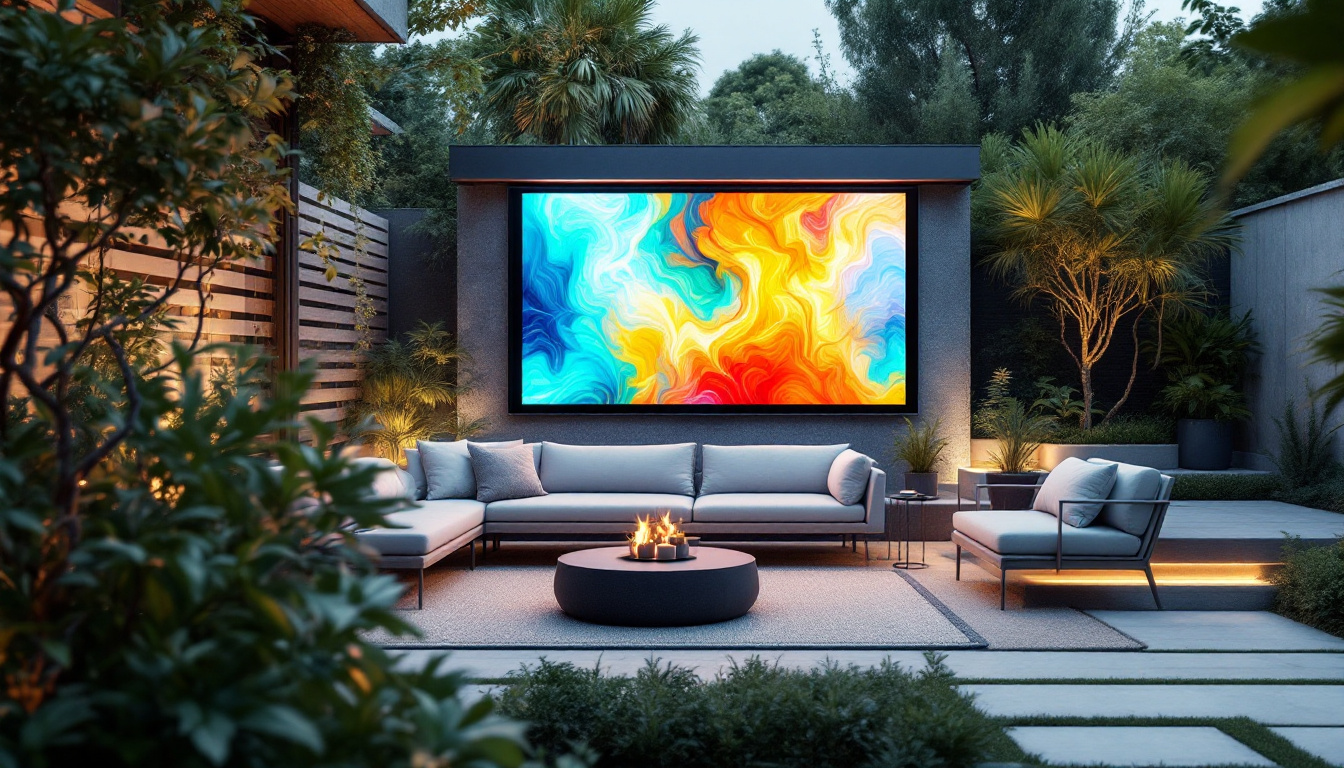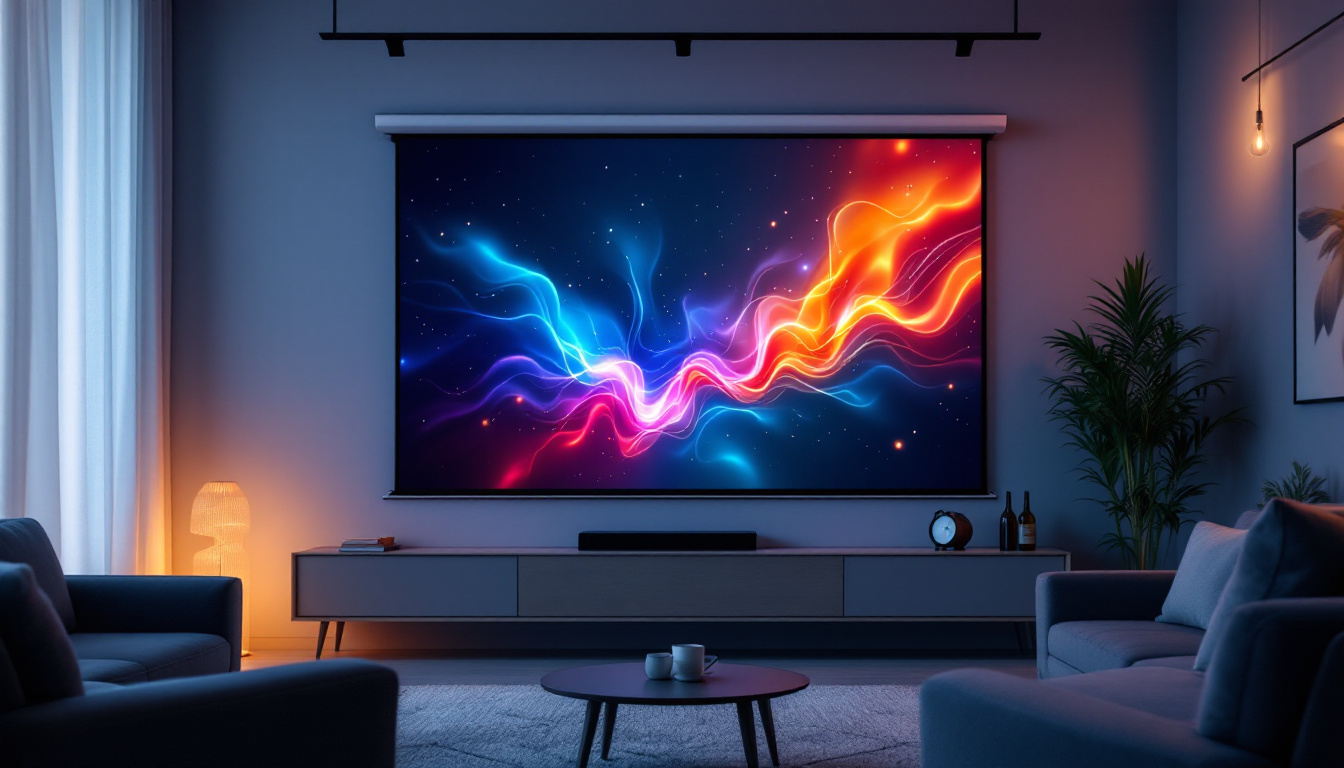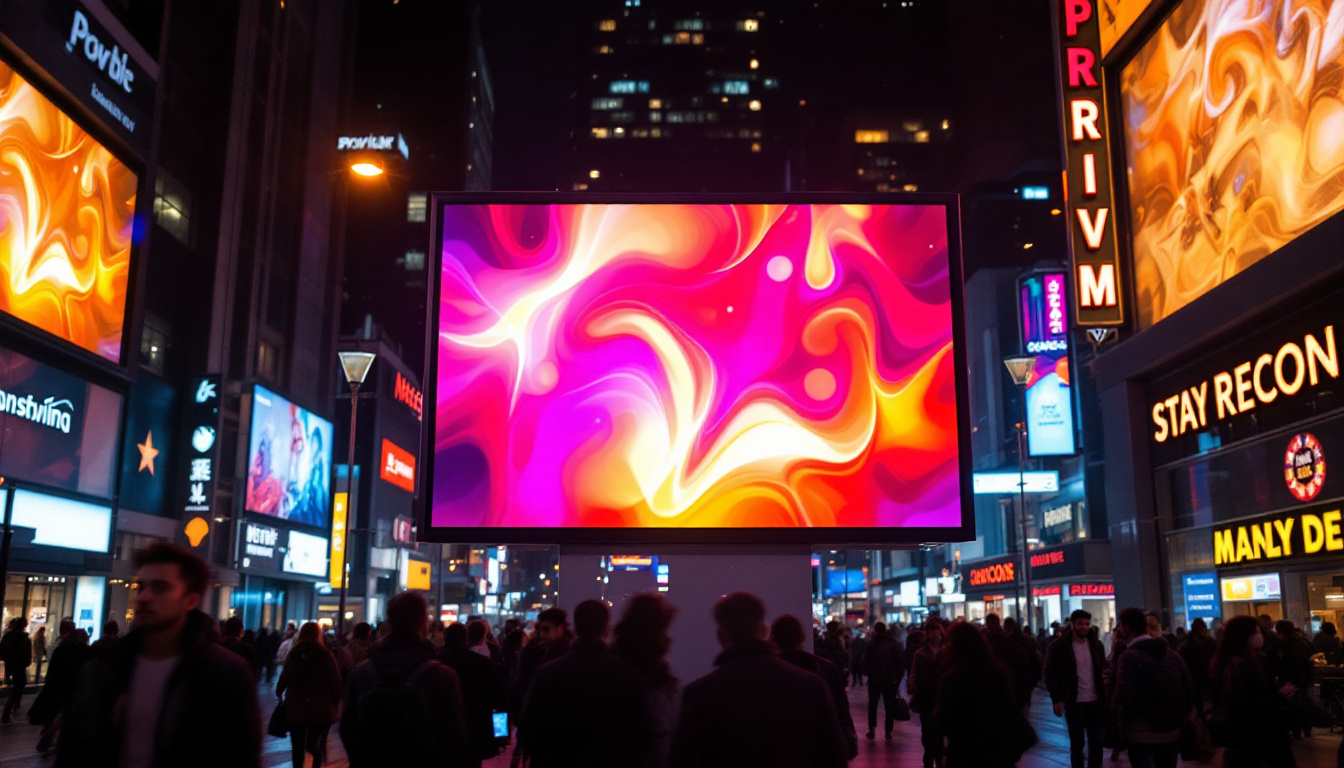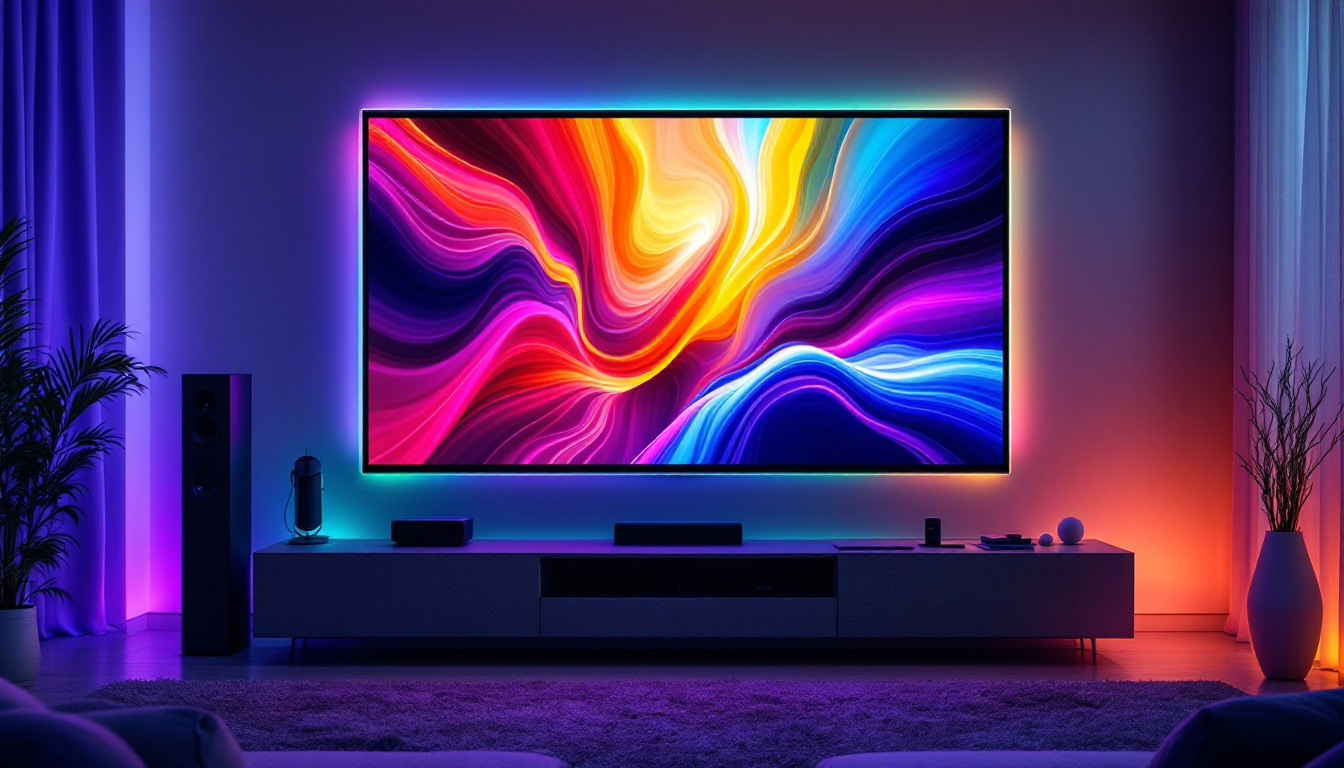Liquid Crystal TV: LED Display Explained
In the ever-evolving world of television technology, Liquid Crystal Display (LCD) TVs have become a household staple. Among the various types of LCDs, LED (Light Emitting Diode) displays have emerged as a popular choice due to their superior picture quality and energy efficiency. This article delves into the intricacies of Liquid Crystal TVs, focusing on how LED technology enhances the viewing experience.
Understanding Liquid Crystal Displays
Liquid Crystal Displays utilize liquid crystals to modulate light and create images. This technology is distinct from traditional cathode ray tube (CRT) televisions, which rely on electron beams to illuminate phosphors. LCDs are thinner, lighter, and more energy-efficient, making them a preferred option for modern televisions. The evolution of LCD technology has led to a dramatic shift in how we consume visual media, enabling the production of larger screens without the bulkiness associated with older technologies. As a result, LCDs have become ubiquitous not only in televisions but also in computer monitors, smartphones, and various other devices.
How Liquid Crystals Work
At the core of an LCD is the liquid crystal layer sandwiched between two polarizing filters. When an electric current passes through the liquid crystals, they align in such a way that they either block or allow light to pass through. This manipulation of light creates the images seen on the screen. The unique properties of liquid crystals allow them to change their orientation in response to electric fields, which is a key factor in their ability to produce high-quality images with sharp details and vibrant colors.
The liquid crystals themselves do not emit light; instead, they rely on a backlight to illuminate the display. This is where LED technology comes into play, significantly enhancing the performance of LCD TVs. The combination of liquid crystals and advanced backlighting techniques has made it possible to achieve remarkable resolutions and refresh rates, catering to the demands of gamers and movie enthusiasts alike. Additionally, the ongoing research into new liquid crystal materials continues to push the boundaries of display technology, promising even better performance in the future.
The Role of Backlighting
Backlighting is crucial for LCD technology, as it provides the necessary illumination for the images displayed. Traditional LCDs often used fluorescent tubes for backlighting, which limited brightness and color accuracy. However, with the advent of LED backlighting, the capabilities of LCD TVs have dramatically improved. LED backlighting can be implemented in various configurations, such as edge-lit and full-array, each offering different benefits in terms of thickness, cost, and picture quality.
LED backlighting offers several advantages, including increased brightness, better contrast ratios, and improved energy efficiency. This technology allows for more precise control over the light output, resulting in deeper blacks and vibrant colors. Moreover, advancements in local dimming technology enable certain areas of the screen to be dimmed or brightened independently, enhancing the overall viewing experience by providing more realistic images. As manufacturers continue to innovate, we can expect to see even more sophisticated backlighting techniques that will further elevate the visual quality of LCD displays, making them an even more compelling choice for consumers.
Types of LED Displays
LED displays can be categorized into two primary types: edge-lit and full-array. Each type has its unique characteristics and advantages, catering to different consumer needs and preferences.
Edge-Lit LED Displays
Edge-lit LED displays feature LEDs positioned along the edges of the screen. This design allows for a thinner profile, making these TVs more aesthetically pleasing and easier to mount on walls. However, the light distribution may not be uniform, which can lead to some areas appearing dimmer than others.
Despite this limitation, edge-lit LED TVs are often more affordable and suitable for general viewing environments. They are particularly effective in well-lit rooms, where their brightness can counteract ambient light. Additionally, the lightweight design of edge-lit displays makes them a popular choice for those who frequently rearrange their living spaces or for renters who want a stylish yet portable option.
Moreover, many edge-lit models come equipped with smart technology, allowing users to access streaming services and apps directly from their TVs. This integration of technology enhances the overall viewing experience, making it easier for families to enjoy their favorite shows and movies without the need for additional devices.
Full-Array LED Displays
Full-array LED displays, on the other hand, incorporate a grid of LEDs behind the entire screen. This configuration allows for local dimming, where specific areas of the screen can be dimmed or brightened independently. As a result, full-array displays typically offer superior contrast and color accuracy compared to their edge-lit counterparts.
While full-array LED TVs tend to be more expensive, they provide a more immersive viewing experience, especially in darker environments. The enhanced picture quality makes them a preferred choice for movie enthusiasts and gamers alike. Additionally, the ability to achieve deeper blacks and brighter highlights contributes to a more dynamic range of colors, which is particularly beneficial for watching high-definition content.
Furthermore, many full-array models are equipped with advanced technologies such as HDR (High Dynamic Range), which further enhances the viewing experience by allowing for a broader spectrum of colors and improved detail in both shadows and highlights. This makes full-array displays not only ideal for cinematic experiences but also for professional applications, such as graphic design and video editing, where color precision is paramount.
Comparing LED and OLED Technologies
While LED displays have become synonymous with high-quality televisions, another technology has gained traction in recent years: Organic Light Emitting Diode (OLED). Understanding the differences between these two technologies is essential for consumers looking to make an informed decision.
Picture Quality
One of the most significant differences between LED and OLED displays is picture quality. OLED panels emit their own light, allowing for true blacks and stunning color accuracy. In contrast, LED displays rely on backlighting, which can sometimes result in light bleed and less impressive black levels.
For viewers who prioritize picture quality, especially in dark scenes, OLED may be the better option. However, LED displays have made significant strides in this area, particularly with advancements in full-array backlighting and local dimming technology.
Brightness and Longevity
LED displays generally outperform OLEDs in terms of brightness. This makes them more suitable for brightly lit rooms, where ambient light can wash out images. Additionally, LED technology has a longer lifespan than OLED, which can suffer from burn-in issues if static images are displayed for extended periods.
For those who watch a lot of news channels or play video games, LED might be the safer choice. However, for cinematic experiences and rich color reproduction, OLED remains a strong contender.
Energy Efficiency and Environmental Impact
As consumers become more environmentally conscious, energy efficiency has become a significant factor in purchasing decisions. Both LED and OLED technologies have their merits in this regard, but they differ in their energy consumption patterns.
Energy Consumption
LED displays are known for their energy efficiency, particularly when using edge-lit technology. They consume less power than traditional LCDs with fluorescent backlighting, making them a more sustainable option. Full-array LED displays, while slightly more power-hungry due to their additional LEDs, still maintain a favorable energy profile compared to older technologies.
On the other hand, OLED displays, while offering superior picture quality, can consume more energy, especially at higher brightness levels. However, they are still more efficient than older CRTs and early LCDs.
Environmental Considerations
Beyond energy consumption, the environmental impact of manufacturing and disposing of televisions is an essential consideration. LED displays generally have a lower environmental footprint due to the materials used and the efficiency of their manufacturing processes. They also tend to have a longer lifespan, reducing the frequency of replacements.
OLED technology, while providing exceptional visual experiences, involves more complex manufacturing processes and materials that may not be as environmentally friendly. As technology advances, efforts are being made to improve the sustainability of both LED and OLED displays.
Choosing the Right LED TV
With a plethora of options available, selecting the right LED TV can be daunting. Several factors should be considered to ensure the best choice for individual needs and preferences.
Screen Size and Viewing Distance
One of the first considerations when purchasing a TV is screen size. The ideal size depends on the viewing distance and the layout of the room. For a comfortable viewing experience, it is generally recommended to sit at a distance of 1.5 to 2.5 times the diagonal screen size.
For example, if a viewer plans to sit 6 feet away, a 55 to 75-inch screen would be appropriate. Larger screens can create a more immersive experience, but they may not be suitable for smaller rooms.
Resolution and Picture Quality
Resolution is another critical factor in choosing an LED TV. Most modern TVs come with at least Full HD (1080p) resolution, but 4K Ultra HD (2160p) is becoming the standard. Higher resolutions offer more detail, making them ideal for larger screens and high-quality content.
Additionally, consider the TV’s color accuracy and contrast capabilities. Features like HDR (High Dynamic Range) can significantly enhance picture quality by providing a broader range of colors and improved brightness levels.
Conclusion
In conclusion, Liquid Crystal TVs with LED displays have revolutionized the way viewers experience television. With advancements in technology, LED displays offer exceptional picture quality, energy efficiency, and a variety of options to suit different preferences. Understanding the differences between edge-lit and full-array LED displays, as well as comparing them to OLED technology, can help consumers make informed decisions.
As the market continues to evolve, staying informed about the latest developments in television technology will ensure that viewers can enjoy the best possible viewing experience. Whether for casual viewing or immersive cinematic experiences, the right LED TV can enhance any home entertainment setup.
Discover the Future of Visual Experience with LumenMatrix
Ready to elevate your viewing experience with the latest in LED display technology? Look no further than LumenMatrix, a pioneer in creating LED display modules that transform how you engage with visual content. From the comfort of your home to the excitement of outdoor events, LumenMatrix offers a comprehensive range of solutions including Indoor and Outdoor LED Wall Displays, Vehicle LED Displays, and innovative options like LED Sports and Floor Displays. Embrace the future of television and digital signage with our Custom, All-in-One, and Transparent LED Displays. Check out LumenMatrix LED Display Solutions today and step into a world where clarity and impact go hand-in-hand.

